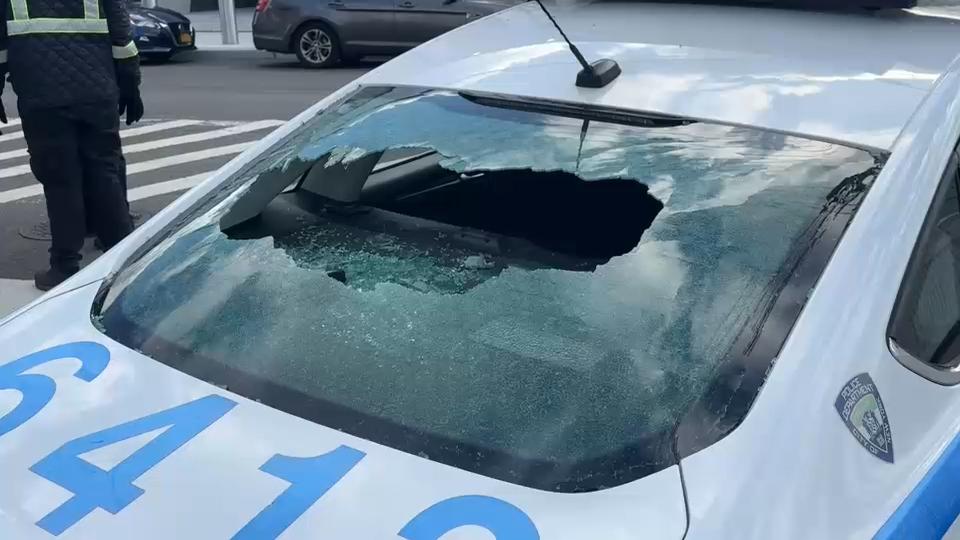November 30, 2025
For the second time in just over a month, a large-scale raid by dozens of immigration agents in New York City was met with a similarly large-scale counter-protest. This time, however, the protesters thwarted the authorities’ plans before they began.
Multiple arrests were made on Saturday during scuffles on the edge of Chinatown, during which hundreds of protesters faced off with federal agents and the New York Police Department (NYPD) as they prepared to launch a raid in the area.
It comes just a month after a raid by 50 federal agents using military-style vehicles stormed Canal Street in Lower Manhattan, and was met with a protest of hundreds in response.
The confrontation also comes amid a reported surge in activity by Immigration and Customs Enforcement (ICE) agents in the city in recent weeks, despite a friendly encounter between the Mayor-elect, Zohran Mamdani, and President Donald Trump earlier this month that appeared to avert a showdown over the issue.
But the mass counter-protest of some 200 people demonstrates the challenges federal authorities will face in enforcing President Trump’s hardline immigration crackdown in a city that is rooted in its immigrant identity.
Immigration crackdowns in other cities like Chicago and Portland have been met with similar responses from locals opposed to the Trump Administration’s hardline immigration agenda, but New York could prove to be the toughest challenge yet.
Saturday’s incident demonstrated how the city’s physical infrastructure —its narrow streets and densely populated areas, built mostly by immigrant labor over the last two centuries—can impede ICE’s so-called “enforcement surges,” which require large numbers of agents moving quickly in and out of an area.
Not only are large-scale ICE raids being met by hundreds of protesters, but in two months, New York will be led by an immigrant mayor for the first time in 50 years. Mamdani, who moved to the United States when he was seven years old, campaigned on protecting New York’s immigrant community from these very same raids.
‘Agitators’ in ‘goggles’
The confrontation began on Saturday, when agents from U.S. Customs and Border Protection (CBP) and the Department of Homeland Security (DHS) gathered in a parking garage in a federal building on the edge of Chinatown in preparation for a raid.
Videos of the incident show protesters blocking the agents as they try to leave the garage in their cars. The crowd then swells to the hundreds, as more NYPD officers arrive.
Later, according to reports, federal agents emerged from the garage and assisted the NYPD in detaining protesters.
The DHS blamed “agitators” for blocking the federal agents in a statement to [news source].
“Following social media posts calling agitators to ICE’s location in New York City, individuals dressed in black clothing with backpacks, face masks, and goggles showed up and began to obstruct federal law enforcement officers including by blocking the parking garage,” the statement said. “NYPD was called and responded to hundreds of violent rioters, which resulted in the arrest of multiple agitators.”
Murad Awawdeh, President of the immigrant advocacy group the New York Immigration Coalition and a member of Mamdani’s transition team, said the protests this weekend were a sign that the city would put up fierce resistance to federal immigration operations.
“New York City is unlike any other place in this country or even the world, and what you have seen yesterday and time and again is that New Yorkers of all stripes, across all creeds, are not going to allow a rogue, lawless, violent and horrific agency to continue to mess with their neighbors.”
The attempted raid in Lower Manhattan comes amid an increase in ICE activity in New York City over the past few weeks. On Oct. 21, in a separate raid on Canal Street, nine people from Africa were taken into custody by ICE agents during what DHS called a “targeted, intelligence-driven enforcement operation…focused on criminal activity relating to selling counterfeit goods.” The raid, which involved more than 50 federal agents, also led to the arrest of five protestors after people reportedly attempted to chase federal agents away. The DHS claimed protestors were blocking vehicles and obstructing law enforcement duties.
In recent weeks, ICE agents have been spotted with greater frequency in immigrant neighborhoods of Corona in Queens, Washington Heights in Manhattan, and Sunset Park in Brooklyn.
Activists in those neighborhoods have responded to the increased ICE activity by organizing community alert systems, such as handing out whistles to be used when agents are seen in the area. The strategies resemble ICE Watch in other cities hit especially hard by Trump’s immigration crackdown, such as Chicago, where groups like Protect Rogers Park enlist community members to follow and report on ICE activity in the area.
Found on mainstream news.





























